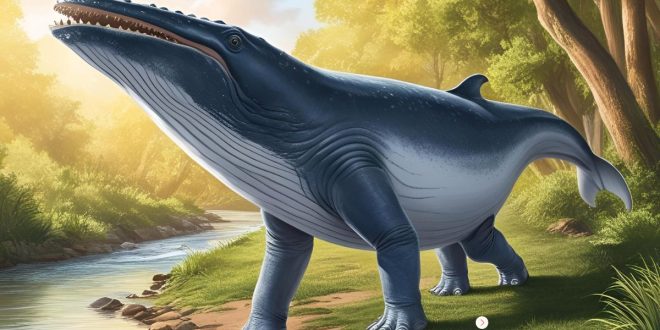Islamabad, April 3, 2025 — Scientists now agree that modern whales originated from Pakicetus, a four legged animal that roamed Pakistan around 50 million years ago. This founding fact showcases Pakistan as a key player in unique creature list where whales changed from being land animals to marine creatures in the past.
Pakicetus has been extracted for the first time in 1979 from the north of Pakistan by the paleontologist Dr. Philip Gingerich. In contrast to the fully aquatic whales of today, Pakicetus demonstrated a wolf body structure but had ear bones that were similar to the whales, meaning it was already partially adapted for being amphibious. Fossil evidence suggests it swim in the fresh waters and feasted on fish and other small creatures.
How Pakicetus Evolved into Modern Whales
Scientists think that Pakicetus was the earliest form of life that evolved into whales. Through a series of millions of years, the offspring of Pakicetus slowly adapted to the sea. They claim Ambulocetus, or the “walking whale,” was next, which lived 48 million years ago and had flipper-like feet for swimming but also walked on land like an otter. A few million years later, Rodhocetus appeared, and it was the first animal that had gotten rid of some of the functions of its legs and developed stronger tail muscles for swimming. Finally, Dorudon, which lived around 40 million years ago, is an example of a whale that was exclusively aquatic and had to abandon the ability to walk. In the final stages of evolution, the blue whale, the largest of all species of whale, emerged, achieving the conversion from land to the ocean completely.
The territories of Pakistan that are rich in fossils are the place where scientists get very important information about the evolution of whales. The discovery of the remains of Pakicetus still stands today as one of the most inspiring progress in the field of evolutionary biology and is the reason that Pakistan still has a relevant place in the study of ancient marine mammals.
 Save Our Pak
Save Our Pak




